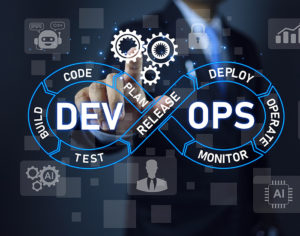Top 10 Software Development Companies in Dubai
Dubai is known for its opulence and forward-thinking advancements. The commercial centre of the Middle East and the gateway to success for all budding entrepreneurs and business proprietors. Through years of growth and progress, Dubai has evolved into a major hub for international trade. In addition to its impressive tall buildings and high-end shopping opportunities, Dubai is quickly becoming a prominent centre for software development. With its advantageous position between East and West, a government that promotes innovation and development, and a rising number of skilled IT professionals, Dubai provides an ideal environment for companies looking to create advanced software solutions.
Selecting the correct software development companies in Dubai is essential for the success of any project. Particularly if the success of your business relies on the strength and honesty of the technology being produced. This blog post showcases ten of the best software development firms in Dubai, chosen for their high client ratings, skills, accolades, and project accomplishments.
Whether you’re a small business looking to create your initial mobile application or a big company working on a high-level software solution, this list can serve as a dependable foundation for your research.
Top Software Development Companies in Dubai
- GoodWorkLabs
GoodWorkLabs, established in 2010, is a leading software development company with a global footprint and a strong presence in Dubai. They specialise in crafting innovative mobile apps, user-centric web applications, and enterprise-grade software solutions. GoodWorkLabs boasts a team of experienced designers, developers, and strategists who work closely with clients to transform their ideas into reality. With a proven track record of success in diverse industries, GoodWorkLabs offers a collaborative and agile development approach, ensuring projects are delivered on time and within budget.
- Main Services Provided: Cloud migration and management, development of mobile apps, websites, and enterprise software, as well as design of user interfaces and user experiences, and integration of artificial intelligence and machine learning technologies.
- They are also a key player in staff augmentation, outsourcing trained professionals to help you build technology platforms in-house.
- Client base and sector focus: Healthcare, Financial Technology, E-commerce, Retail, Media & Entertainment.
- Key distinguishing factors: Recognized for exceptional design skills, emphasis on user satisfaction, proficiency in innovative technologies such as artificial intelligence and machine learning, and demonstrated history of completing challenging projects.
Website: https://www.goodworklabs.com/
2. Hyperlink Infosystem
Hyperlink Infosystem is one of those companies that has a long history of delivering perfectly acceptable results. Established in 1994, Hyperlink Infosystem is a reputable company that provides a variety of software development services in the IT industry. They are experts in mobile app development, web development, cloud solutions, and digital services. Hyperlink Infosystem serves clients from diverse industries, placing a significant emphasis on the Middle East market.
- Services provided include Mobile App Development, Web Development, Cloud Solutions, Digital Marketing, and Enterprise Application Integration (EAI).
- Client base and target industries: Healthcare, Education, Retail, Manufacturing, and Government.
- Key factors: Extensive Middle East market experience, demonstrated success in delivering large projects, emphasis on offering complete IT solutions.
3. Resolve Technologies
Resolve Technologies has been in the market since 2008. They are a Dubai-based software development company specialising in custom software solutions and mobile app development. They offer a full range of services, from conceptualization and design to development and implementation. Resolve Technologies is known for its agile development methodology.
- Key Services Offered: Custom Software Development, Mobile App Development, Web Development, UI/UX Design, Cloud Solutions.
- Clientele and Industry Focus: Hospitality, Logistics, Retail, Education, Government.
- Differentiators: Agile development methodology, collaboration, expertise in cloud-based solutions.
4. MobiWeb Technologies
MobiWeb Technologies is a customer-centric software development company specialising in mobile app development and web development solutions. They offer a full development lifecycle approach, from ideation to deployment and maintenance. MobiWeb Technologies is known for its creative design capabilities and focus on developing user-friendly applications.
- Key Services Offered: Mobile App Development (Native & Hybrid), Web Development, UI/UX Design, E-commerce Solutions, Digital Marketing.
- Clientele and Industry Focus: E-commerce, Media & Entertainment, Healthcare, Education, Travel & Tourism.
- Differentiators: Focus on creative design and user-friendly interfaces, expertise in both native and hybrid mobile app development, and additional services like digital marketing.
5. Sigosoft
Sigosoft is a software development company offering a comprehensive range of services, including custom software development, mobile app development, and enterprise application integration (EAI). They cater to a wide range of clients across various industries and are known for their focus on quality and security.
- Key Services Offered: Custom Software Development, Mobile App Development, Web Development, EAI Solutions, IT Infrastructure Management.
- Clientele and Industry Focus: Finance, Manufacturing,
- Differentiators: Strong focus on quality and security, expertise in EAI solutions, experience in managing complex IT infrastructure.
6. CronJ IT Technologies Pvt. Ltd
CronJ IT Technologies Pvt. Ltd. is an Indian IT solutions company with a presence in Dubai. They offer a variety of services, including web development, mobile app development, and digital marketing solutions. CronJ IT is known for its cost-effective solutions and focus on delivering projects on time and within budget.
- Key Services Offered: Web Development, Mobile App Development, E-commerce Development, Digital Marketing, Cloud Solutions.
- Clientele and Industry Focus: Startups, SMEs, E-commerce Businesses, Various Industries.
- Differentiators: Cost-effective development solutions, focus on timely project delivery, experience in serving startups and SMEs.
7. AP GROUP
AP GROUP is a well-established IT solutions provider offering a wide range of services, including software development, web design, and IT infrastructure management. They cater to a large clientele across various industries, with a strong focus on the Middle East market.
- Key Services Offered: Software Development, Web Design & Development, Mobile App Development, IT Infrastructure Management, Digital Marketing.
- Clientele and Industry Focus: Hospitality, Education, Government, Retail, Manufacturing.
- Differentiators: Broad range of IT services, extensive experience in the Middle East market, proven track record of delivering large-scale projects.
8. Yield Interactive
Yield Interactive is a Dubai-based digital marketing agency that also offers software development services. They specialise in developing custom web applications, e-commerce platforms, and content management systems (CMS). Yield Interactive is known for its data-driven approach and focus on delivering results.
- Key Services Offered: Web Application Development, E-commerce Development, CMS Development, Digital Marketing, and Marketing Automation.
- Clientele and Industry Focus: E-commerce Businesses, Retail, Media & Entertainment, Education, Healthcare.
- Differentiators: Data-driven development approach, focus on e-commerce solutions, additional expertise in digital marketing and marketing automation.
Choosing the Right Partner for Your Software Development Needs
Selecting the perfect Software Development Companies in Dubai for your project necessitates thoughtful deliberation. Assess your particular requirements, project scale, financial plan, and preferred development method. Take into account the company’s familiarity with your sector, their collection of comparable projects, and feedback from their clients.
Additional Resources:
- Dubai Chamber of Commerce and Industry: https://www.dubaichamber.com/en/home/ (Provides information on doing business in Dubai, including the technology sector)
- Dubai Technology and Media Free Zone (DTEC): https://dtec.ae/ (A hub for technology and media companies in Dubai)
A Final Note
Dubai serves as a dynamic hub for software development. With its unique location, access to a global pool of skilled workforce, and support from the government, the city is poised. At GoodWorkLabs, we are proud to be a part of this exciting ecosystem. We leverage our expertise and experience to help businesses of all sizes achieve their software development goals.
If you’re looking for a reliable and innovative software development companies in Dubai, contact GoodWorkLabs today. Book a free consultation with us today to discuss your project requirements and let’s explore how we can help you bring your vision to life.


















